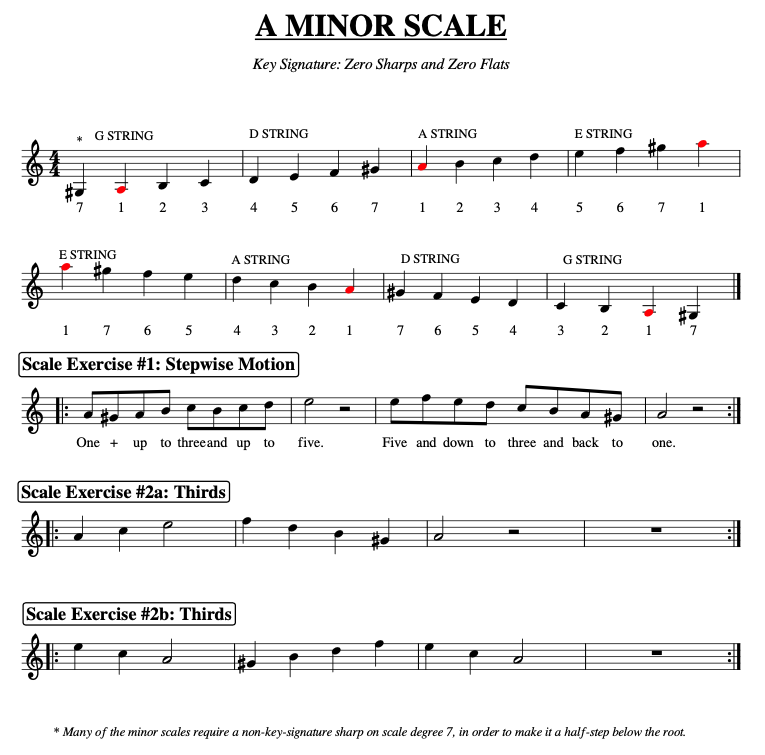If you’ve never picked up a mandolin and are a new beginner, you’ll want to get a good start by holding the instrument correctly and learning to master the basics.
I have compiled a list of free lessons below to get you started, and I encourage you to take plenty of time to work through each set of lessons at your own speed. Some are repetitive, either repeating or overlapping some material, but it is good to fully assimilate every one of these lessons to help you build a solid foundation when you begin playing.
1. “Mandolin Basics” videos by Pete Martin: Watch Them Here
2. “Beginner Series” videos by Baron Collins-Hill: Watch Them Here
3. Fourteen text/tab “Beginning Mandolin Lessons” by Bradley Laird: Find Them Here
4. More great material from Bradley Laird:
– Video Lessons (including 23 free video lessons)
– 100 Bluegrass Chord Progressions (including 10 free chord progressions)
– Video: How To Change Mandolin Strings
– Grass Talk Radio Weekly Podcast Archive
All three of the teachers featured above are also members at The Mandolin Cafe, which is one of the greatest internet forums available for mandolin players. I encourage you to join the forum, you can visit the website here.
Other great advice would be to consider taking lessons if you can find a good local teacher who plays mandolin.
If you’re not a guitar player, you can skip to the next section, “What To Do Next”.
There are many people who come to the mandolin from the guitar, because the six string guitar has become the most popular stringed instrument of the last 150 years. I played guitar over 40 years before picking up a mandolin, and I know that many other mandolin players have similar experience.
In this section, I want to offer some points to ponder that may help you make a smooth transition between the instruments.
- Mandolin is not to be approached like just a little guitar. They are unique instruments with big differences. Take time to learn the proper way to hold a mandolin, fret a mandolin, and use a mandolin for picking melodies and playing rhythm differently than you do on guitar. Take time to work through the lessons I linked to previously.
- Mandolin is not tuned “upside down” from guitar. The lower strings of guitar are indeed tuned low to high E, A, D, G while the four courses of mandolin strings are tuned low to high G, D, A, E – but to equate this as mandolins being tuned backwards from a guitar is the wrong approach and ultimately misleading. Get an understanding of what it means that a mandolin is tuned in fifths, while a guitar is tuned primarily in fourths.
- It is important to train yourself to use the tips of your fingers to note a mandolin, rather than the pads of your fingers. On guitar, with it’s wider neck and fret spacing, and longer stretches, you might get away with sloppy noting more easily than on the mandolin. Avoid barring strings on the mandolin when it is possible to note two sets of strings with one fingertip.
- Generally, on guitar, you will use one finger per each fret as a good “hand position” on guitar, but on mandolin, you will use one finger to cover every two frets on the mandolin for a good “hand position”.
A Mandolin is most suited to melody playing, though it can be a powerful rhythm instrument. Your hand position for playing mandolin will be much different than guitar if you want to be versatile and proficient on mandolin. It is a different instrument than a guitar, and suited to different purposes, even as it has its own cool sound. In general, hand position on mandolin typically mimics hand position on fiddle more than hand position on guitar.
There is a lot you can bring to the mandolin from the guitar. Any general knowledge of music theory and right hand rhythm and flat-picking can be adapted to the mandolin; also, if you’re proficient with hammer-ons, pull-offs, vibrato and such, those ornaments can be adapted and give you a leg up on mandolin playing as well.
1. Learn some tunes. One of the best places to start is mandolessons.com. The site has a great catalog of simple fiddle tunes that are taught for mandolin. Each tune is taught note-for-note in a video, and sheet music with tablature is also available. There is never a charge for these lessons. If you are not familiar with any of the tunes, have a listen to the tunes being played at the beginning of the teaching videos until you find one you like the sound of. Visit the page here.
Also, there is a great library of tunes that use the TablEdit format at mandozine.com at this page. Read that page, then check out the links in the left-hand menu there. To use TablEdit files, you can download a free TEF Viewer here.
Also, there are numerous books you can find with mandolin music for all genre. Some even come with CD backing tracks.

Examples Shown:
The Beatles For Solo Mandolin, by Bill LaFleur, Hal Leonard Corporation.
Chord melodies for 20 Beatles’ tunes in tablature and standard notation.
Mandolin Song Book by Bradley Laird, Watch & Learn, Inc.
Includes audio CD, 32 Mandolin solos in tablature and standard notation.
YouTube and Google search are your friends in finding tunes and lessons on the web. Additionally, you’re welcome to use the contact form on this website to ask me for guidance; I don’t have all the answers, but I’m happy to help if I can.
2. Join a mandolin community. There is really no better place to learn about all things mandolin than to engage in a vibrant online community like the forums at www.mandolincafe.com
When visiting the Cafe, be sure to check out the Learn/Listen menu tab as well!
3. Join a jam session. It will be extremely valuable for you to begin playing with others as soon as possible.
4. Find a teacher or music mentor. Like number three, when you find someone you can play with, learn from and collaborate with, then you are bound to grow musically by leaps and bounds.
5. Perform. For family and friends. Solo or with a group. For church services. For birthday parties and any special occasion. For nursing homes. For open mike coffee houses. Busking on the street corner. Gigging at bars or restaurants. Performing will toughen your resolve, sharpen your skills and help you find your voice musically.
Have fun mandolinning!
If this advice for mandolin beginners has been helpful, take a moment to like, share, comment and all that good stuff. ~ Mark























